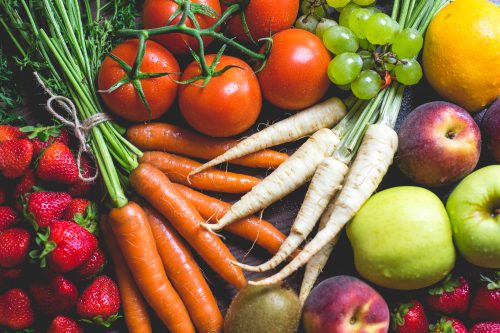Data gathered by the Centers for Disease Control and Prevention (CDC) between 1998 and 2008 indicated that produce (raw vegetables, leafy greens, fruit) caused up to 46% of all foodborne illnesses reported in the U. S. each year.
The FDA attempted to address this problem by creating the Produce Safety Rule (PSR) as part of the Food Safety Modernization Act of 2011. According to the FDA, the PSR established, ”for the first time, science-based minimum standards for the safe growing, harvesting, packing, and holding of fruits and vegetables grown for human consumption.” The Produce Rule went into effect on January 26, 2016, with the first compliance date for large growers set for January 26, 2018.
However, despite reaching the initial compliance date, the FDA announced they would not conduct inspections assessing PSR compliance during 2018, preferring instead to dedicate resources to educating farmers and conducting cost-free assessments of farms. (Note: the PSR includes different standards and compliance dates for sprout operations).
The PSR addressed a definite need as some of the most severe outbreaks in recent years have involved produce. In 2006, bagged spinach contaminated with E. coli O157:H7 caused 200 illnesses across the U.S. including three deaths. In 2011, cantaloupe contaminated with Listeria monocytogenes sickened 125 people across 28 states, resulting in 33 deaths, making it the deadliest foodborne illness outbreak in the U.S. since 1924. Earlier this year, romaine lettuce, contaminated with E. coli O157:H7, caused an outbreak of foodborne illness resulting in 210 people infected across 36 states, 96 individuals hospitalized and five deaths. Investigators traced the spinach and romaine outbreaks to water associated with the growing facility. In the recent case involving romaine, the culprit appears to be contaminated irrigation canal water.

Despite this history of tainted water contributing to produce contamination, the FDA proposed in September 2017 to extend the compliance dates for the Agricultural Water provision of the PSR until at least 2022, calling the water regulations, “too complicated and in some cases too costly, to be effectively implemented.” The additional time would allow the FDA to determine “the most effective and practical approach for Agricultural Water.” Stipulations of the water quality rules included limits on the level of E. coli (in CFUs) allowed for various water uses such as hand washing, ice used with produce, and water applied directly to the produce. The rule stipulates specific testing volumes and intervals. Some stakeholders are questioning the delay, arguing that water quality may be the most critical component in keeping produce safe for consumers.
To demonstrate a commitment to produce safety, in October 2018, the FDA submitted for comment a Draft Guidance entitled, “Standards for the Growing, Harvesting, Packing, and Holding of Produce for Human Consumption: Guidance for Industry.” This Guidance addresses, among other issues, the management of biological soil amendments of animal origin (BSAAO). The Guidance document categorizes BSAAOs as “treated” or “untreated” and establishes application restrictions (application methods and application intervals) based on this distinction.
There are two different levels of treatment available for BSAAOs and the treatment level applied determines the acceptable microbial standard of Listeria monocytogenes, Salmonella species, fecal coliforms, and E. coli O157:H7. A qualified laboratory must perform a validation study on the treatment technique utilized to confirm compliance with the specified microbial standards.
The Guidance requires the validation studies, “include multiple repetitions of microbial testing performed using a statistically valid sampling plan to verify that the treatment process will consistently produce a BSAAO that meets the microbial standard; and Outline the parameters (e.g., time, temperature, pH, moisture, number and timing of turnings, carbon:nitrogen ratio) to be controlled, and the acceptable limits or ranges for those parameters, in order to achieve the microbial treatment levels.”
Produce safety affects virtually every household in the U.S. Lo1118-food-produce-safetyok for the FDA to continue to address the issue of produce safety through regulations and guidance activities.
To Read the Guidance Document Click Here.




